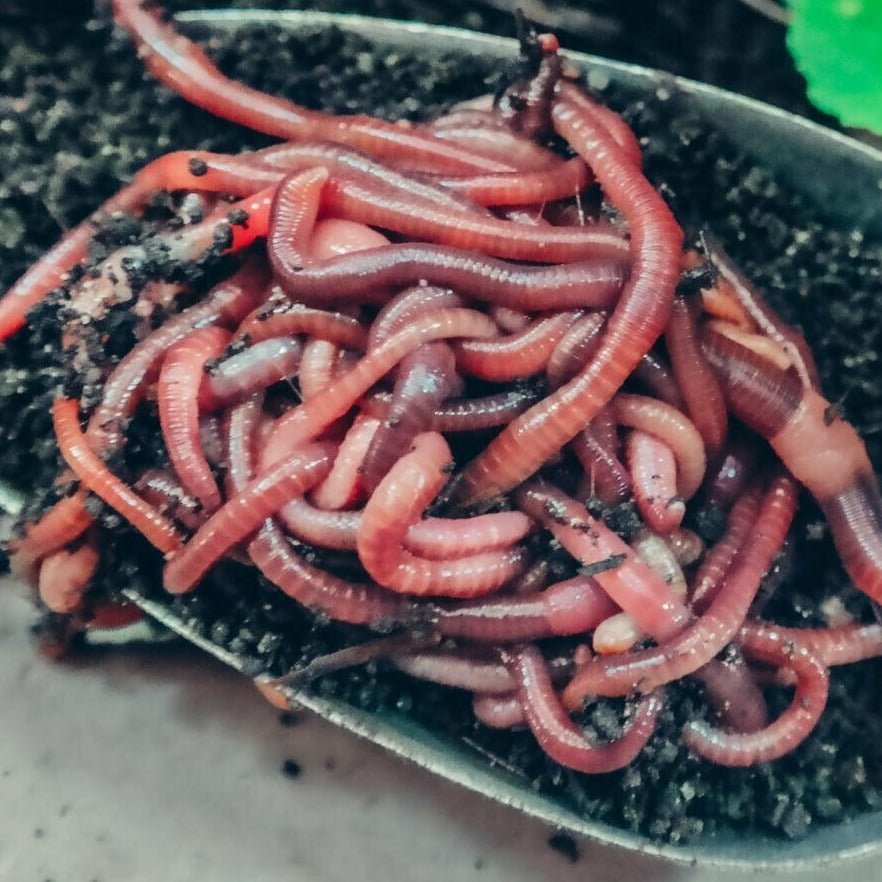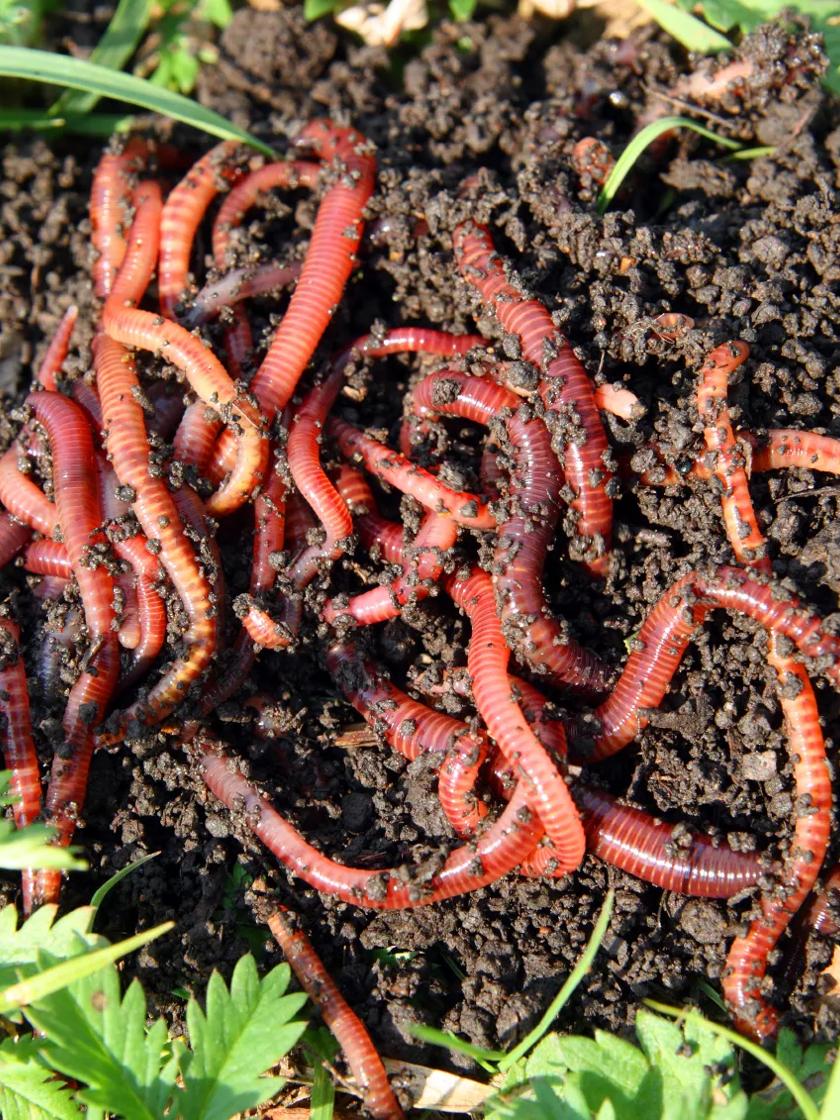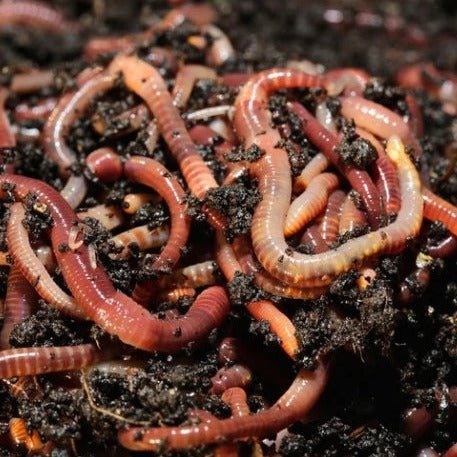Red Wigglers: The Unsung Heroes of Organic Waste Recycling
Red wigglers, or Eisenia fetida, work as crucial representatives in the natural waste reusing process, changing thrown out products right into valuable vermicompost. Their reliable failure of natural issue not just boosts dirt high quality yet likewise adds to sustainable waste management methods. As the globe progressively looks for solutions to deal with waste accumulation and boost farming performance, recognizing the function of these worms becomes necessary. What devices permit them to grow in garden compost atmospheres, and how can they be successfully used in both domestic and business settings? Exploring these inquiries discloses the broader implications of vermicomposting in our environmental landscape.
What Are Red Wigglers?
The amazing strength of red wigglers, clinically referred to as Eisenia fetida, highlights their critical role in organic waste recycling. These small, reddish-brown earthworms are commonly found in decaying organic issue, such as compost heap and manure lots. Lake Hickory Bait. Unlike other earthworm varieties, red wigglers thrive in nutrient-rich settings and are extremely reliable at damaging down natural products, making them vital for vermicomposting

(Red Wiggler Express)In enhancement to their role in waste reduction, red wigglers add to soil health by boosting dirt framework and aeration through their burrowing tasks (Lake Hickory Bait). Their visibility in composting systems not just enhances disintegration prices yet additionally advertises a lasting technique to throw away management, showing their significance in ecological preservation initiatives
Advantages of Composting With Worms
Composting with worms, particularly red wigglers, offers numerous benefits that enhance both waste administration and soil health and wellness. These worms successfully damage down organic waste, converting it right into nutrient-rich vermicompost that enriches soil. This process speeds up decay, permitting for a much faster recycling of cooking area scraps and other organic products compared to typical composting approaches.
In addition, the vermicompost generated by red wigglers is bristling with advantageous microorganisms, which assist improve dirt structure, oygenation, and wetness retention. This boosts the overall wellness of plants, advertising strenuous development and increased yields in gardens and agricultural settings. In addition, the use of worms in composting minimizes the production of greenhouse gases, such as methane, adding to a more sustainable waste management system.

Just How to Start Vermicomposting
Developing a vermicomposting system is an uncomplicated procedure that can produce substantial benefits for both waste monitoring and dirt enrichment. To start, select a suitable container, such as a plastic bin or wooden box, with ample ventilation openings to make certain correct air movement. The dimensions need to preferably be around 2 feet by 3 feet, allowing ample room for the worms to thrive.
Following, prepare bed linen material, which can be composed of shredded newspaper, cardboard, or coconut coir. This bed linens must be dampened to produce an appropriate environment for the worms. Once the bed linens remains in place, introduce red wigglers (Eisenia fetida) right into the container, normally around one extra pound of worms for every square foot of area.
Following the positioning of worms, include organic waste, such as vegetables and fruit scraps, coffee premises, and crushed eggshells. Prevent including dairy, meat, or oils, as these can produce smells and bring in pests. Ultimately, place the bin in a shaded, temperature-controlled location to keep ideal conditions for worm activity. With these steps, you will effectively initiate a vermicomposting system that adds to sustainable waste administration and improves your soil.
Keeping a Healthy Worm Bin
(Lake Rhodhiss Bait)Keeping a worm container flourishing calls for regular attention and like ensure the wellness of the red wigglers and the performance of the composting procedure. Proper maintenance begins with monitoring the dampness levels; the bin ought to perspire but not saturated. A great general rule is to preserve an uniformity comparable to a wrung-out sponge.
Gently blending the bedding and food scraps every couple of weeks stops compaction and guarantees that all worms have access to oxygen. In addition, it is crucial to feed the worms suitably.
If the container ends up being as well hot or cool, the worms might become stressed out. By vigilantly handling these elements, one can keep a robust and productive worm container.
Influence On Lasting Living
The successful upkeep of a worm bin not only profits the wellness of red wigglers yet additionally adds considerably to lasting living techniques. By reusing organic waste, such as kitchen scraps and lawn particles, red wigglers help draw away considerable amounts of material from garbage dumps. This decrease in waste not just reduces greenhouse gas emissions yet likewise reduces the environmental concern related to waste monitoring.
Moreover, the spreadings created by red wigglers act as a nutrient-rich organic fertilizer, boosting dirt wellness and advertising plant development. This natural choice to chemical fertilizers sustains sustainable farming and horticulture techniques, minimizing reliance on artificial inputs that can damage environments. Additionally, worm composting cultivates recognition of waste monitoring, urging individuals and communities to take on even more sustainable practices.

Final Thought
In summary, red wigglers serve as vital contributors to natural waste reusing with their reliable disintegration of natural products. By integrating vermicomposting into waste monitoring techniques, individuals and communities can dramatically reduce waste while advertising environmental sustainability.